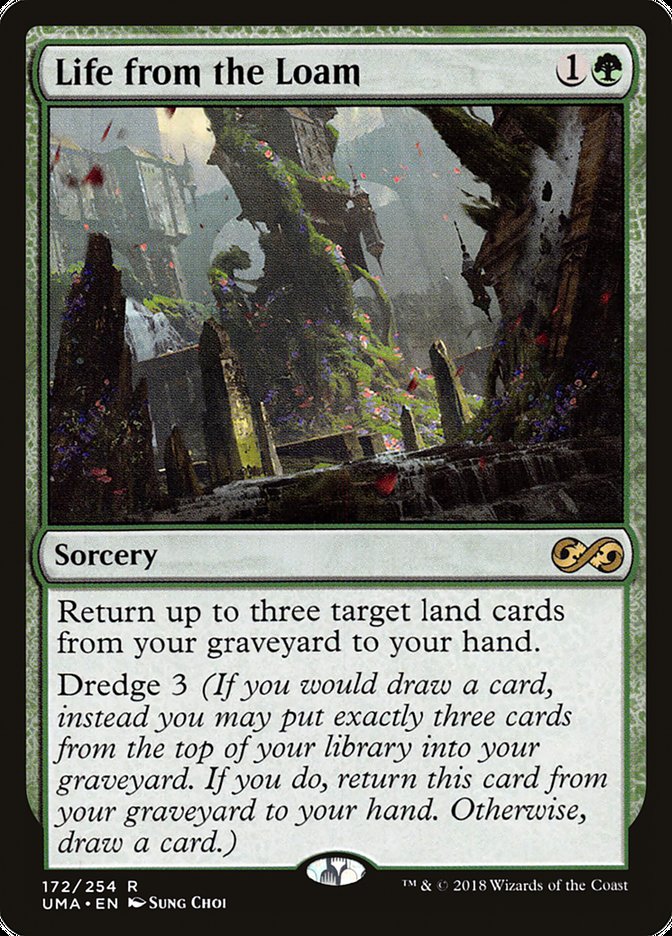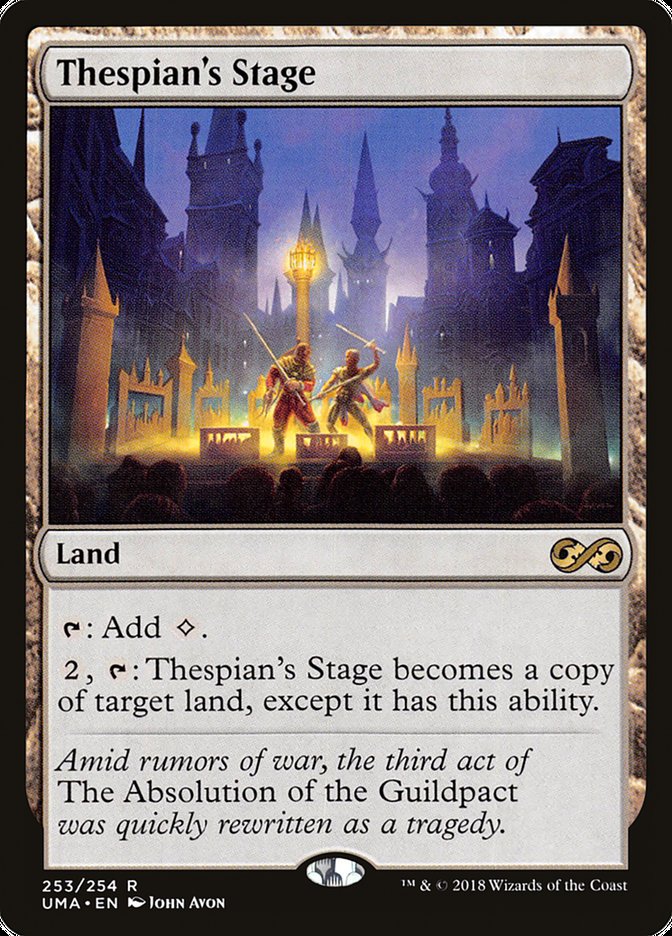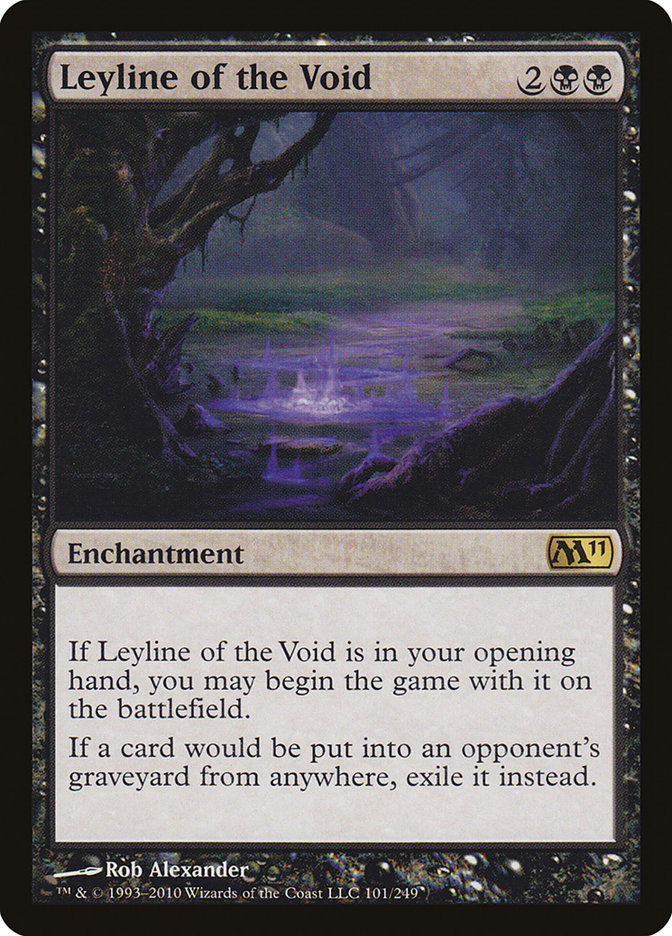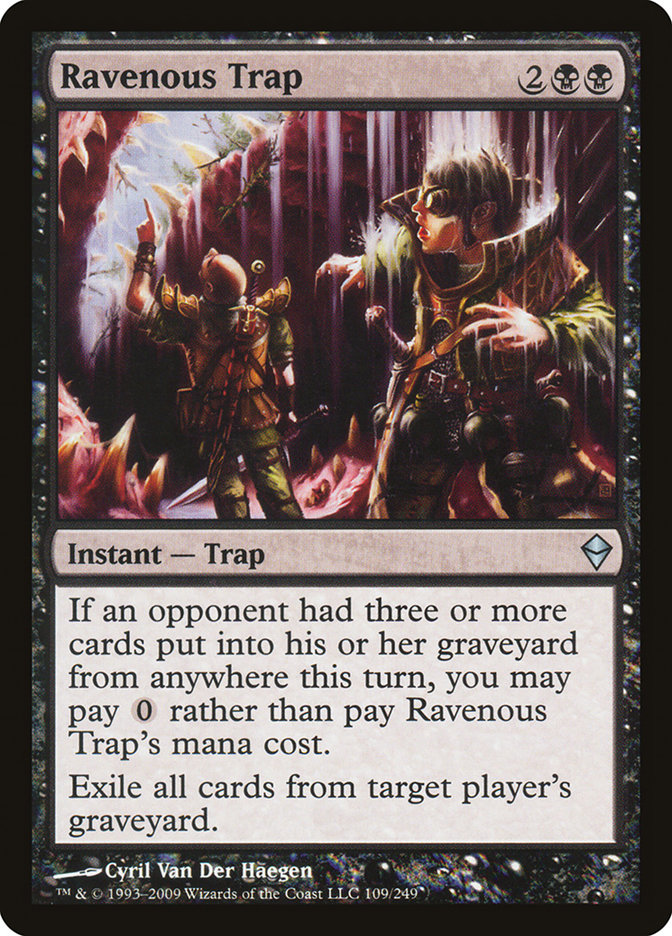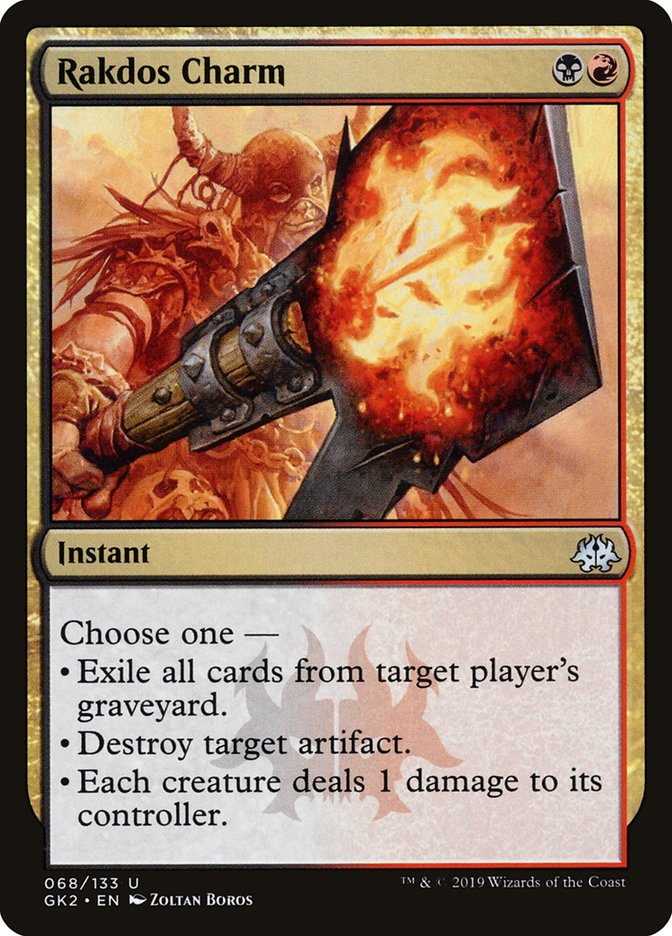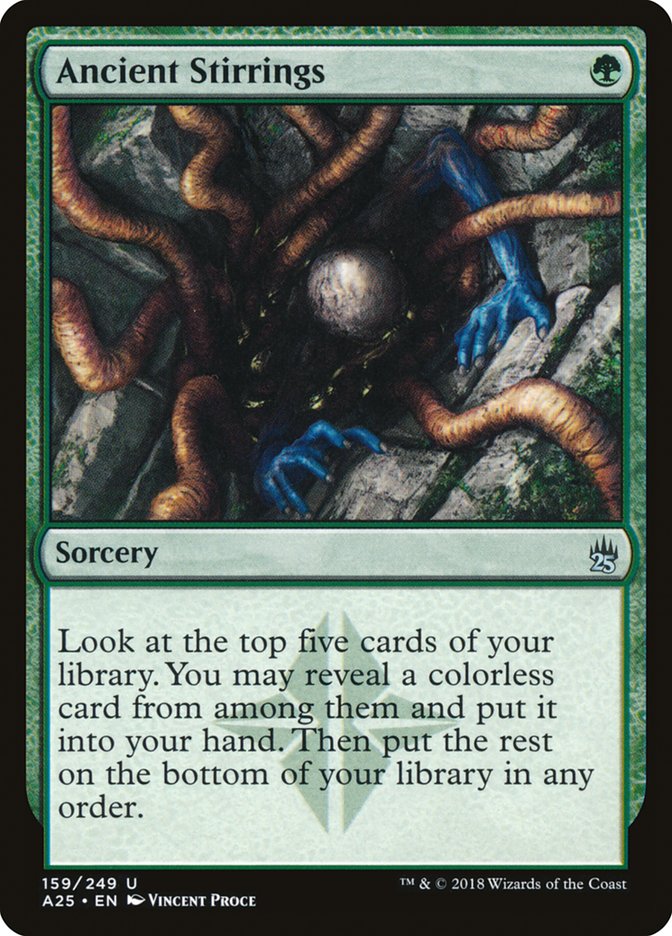Life from the Loam is quietly one of the most powerful cards ever printed. It’s a one-card engine, a flagship you can build your deck around, and the progenitor of a half-dozen unique decks across Magic’s rich history. It is singlehandedly responsible for the Lands deck in Legacy, makes Modern Dredge a true contender where it might otherwise be a one-trick pony, and offers the ever-desirable self-contained divergent gameplan to decks that need it.
Life from the Loam, all on its own, essentially offers the land card type its most powerful ally in all of Magic. The same argument that brought Birthing Pod to the Modern Banned List applies to Loam, though (to the best of my recollection) no one has loudly and publicly asserted this logical leap.
Just like Birthing Pod got better and better with every new creature card printed (primarily creatures with enters-the-battlefield abilities or benefits from persist or undying), Life from the Loam gets better and better with every new land that sees print. And Blast Zone is quite the newcomer. It’s going to make a big impact on all the major Constructed formats, often in concert with some of the broken flagship cards that make great use of lands.
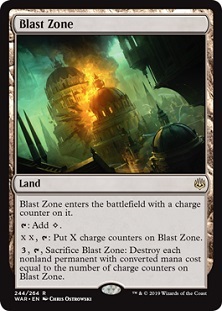
The short list of archetypes that will likely want to incorporate Blast Zone: Legacy Lands, Legacy Four-Color Loam, Modern Dredge, Modern Whir Prison. It could make it into Legacy Colorless Eldrazi or Eldrazi Post, and Modern Amulet Titan and Tron might also be better off incorporating a copy. Hell, even Hardened Scales or Affinity might want one or two of these! Being able to staple Engineered Explosives (or Powder Keg) on a part of a deck’s manabase is a huge game-changer. Any deck that can stomach the colorless land and needs flexible answers to problematic permanent types will think hard about putting one of these in there.
Blast Zone might be the best land printed for Legacy Lands since Thespian’s Stage. A land that comes down and immediately blows up every Aether Vial, Mother of Runes, Death’s Shadow, Delver of Secret, Pteramander, and the like is already attractive. Had Blast Zone existed eighteen months ago, Lands would never have lost to the various Deathrite Shaman decks that dominated the format back then.
Now, we have to contend with a higher density of Death and Taxes, Miracles, various Prison decks, and a healthy dose of combo, but the addition of a sweeper right in the manabase can’t possibly be a bad thing. It doesn’t quite answer a Blood Moon, but it answers Back to Basics and Rest in Peace, two permanents that can make life incredibly annoying for a Lands player. I’m sure Lands aficionados like Jarvis Yu, Jody Keith, Daryl Ayers, David Long, and their associates are already daydreaming about what matchups this card solves for them, and how it opens up an extra sideboard slot or two for the new techy plan guaranteed to catch opponents off-guard.
I’ll leave the Legacy Lands brewing to the Lands masters, with one final techy play/note. Thespian’s Stage can copy a Blast Zone and blow up all zero-mana permanents, which matters for Chalice of the Void. Most Blast Zones will never blow up a Chalice of the Void, but Lands can make it happen.
I freely admit that the better Lands gets, the worse it is for my Death’s Shadows. Grove of the Burnwillows is the bane of Death’s Shadow’s existence, and if Lands does suddenly jump up the ranks of Legacy decks, I might have to pick it up for a change of pace.
No, I’m no Legacy Lands expert, but if there’s one deck I do know that can make great use of this land, it’s Modern’s best Life from the Loam deck, Dredge.
Creatures (18)
Lands (19)
Spells (23)

What beats Dredge? Graveyard hate. The best graveyard hate is, of course, Rest in Peace, though Leyline of the Void, Relic of Progenitus, Tormod’s Crypt, Grafdigger’s Cage, Nihil Spellbomb, Surgical Extraction, Ravenous Trap, and the like all offer their own particular play patterns and interaction points.
The various forms of graveyard hate each demand their own unique play patterns and counter-hate, but one thing that Dredge designers haven’t done recently is incorporate a slower, midrange, Loam-based engine to properly take advantage of the fact that the opponent has slowed down their own deck to fight the graveyard. Especially in concert with the London Mulligan rule and the associated boost to Dredge’s consistency, a sideboard plan full of flexible removal might be just the tool Dredge needs to surprise opponents. Trust me, I love slow Dredge. Blast Zone is the card to bring it back.
Consider the following (rough) list:
Creatures (18)
Lands (19)
Spells (23)

First and foremost, Grafdigger’s Cage is now no longer a concern. It simply doesn’t do anything against Dredge anymore. We can Dredge through our whole deck, Life from the Loam back a Blast Zone, and blow up the Cage before reanimating a giant pile of Vampires and Zombies to eat our opponents’ brains. The Creeping Chills and hardcast Stinkweed Imps give us plenty of defense to wait out any token aggression from our opponent while we enact this plan.
Rest in Peace is almost insignificant against us at this point. With two Blast Zones and six flexible sideboard answers we can always bring in, there’s little to fear from that card. Not that too many people play that card in their sideboard, but it’s good to know that we have plenty of outs.
Leyline of the Void, on the other hand, is relatively common, and the slow, ponderous route of Blast Zone isn’t pretty, but it may be a necessary evil. Blowing up Death’s Shadows is also a lifesaver in the close matchup against Grixis Death’s Shadow, and it’s hard to complain about uncounterable answers to the best permanents Death’s Shadow serves up. Combine this with the sideboard six-pack of removal that hits Gurmag Angler, Death’s Shadow, and Leyline of the Void alike, and suddenly an alternative gameplan starts to take shape.
Obviously Relic of Progenitus and Nihil Spellbomb are still going to do their damage, but these one-shot graveyard hate spells are insufficient on their own, and Blast Zone gives Dredge the opportunity to force the opponent to sacrifice one on their own turn, thus giving a window to turn on the Dredge engine and start crushing dreams.
With the full swap to more flexible removal over Nature’s Claim, it makes sense to employ some Surgical Extractions to try to strip Tron of its mana engine in concert with Assassin’s Trophy or Ghost Quarter. This is experimental, to be sure, but I’m cautiously optimistic. Extracting away all the opponent’s Creeping Chills in the mirror is a huge advantage, and if opponents don’t know your decklist, they may sideboard in removal for nonexistent Leylines while your graveyard hate stays safe.
At the same time, I’m trying to be a bit forward-looking, and it seems clear that the next step for anti-graveyard cards in Modern is the suite of one-shot instants, as Dredge is well-prepared to combat hate permanents. Thus Ravenous Trap, Rakdos Charm, and Surgical Extraction will all grow in sideboard presence, and proper coverage of those cards is key.
It may mean bringing back some number of Collective Brutality in addition to the two Thoughtseizes I’ve chosen to employ as preemptive counter-hate. Thoughtseizing a Surgical Extraction or Ravenous Trap is a unique pleasure as a Dredge player, and Collective Brutality offers a discard outlet while attacking an opponent’s hand. It may end up being more useful than Lightning Axe, depending on how many copies of Thing in the Ice float around the metagame after Mythic Championship London.
Outside of Dredge, there are a few other applications for this type of effect. For one, Affinity and Hardened Scales decks absolutely loathe losing to Stony Silence. They’ve become nominally less vulnerable by incorporating cards like Experimental Frenzy and Animation Module, and it’s true that Stony Silence is not a very large part of the Modern metagame, but in its stead annoying cards like Ensnaring Bridge have become real players, and well worth attacking. One Blast Zone seems like a no-brainer in a deck with Ancient Stirrings, offering a high upside with a rather low cost.
Of course, speaking of decks with Ancient Stirrings, Tron has the mana to pump into a Blast Zone, the ability to find a Blast Zone, and the desire to blow up permanents like Alpine Moon, Amulet of Vigor, Death’s Shadow, or a battlefield full of Whir Prison pieces. At the same time, Amulet itself is so full of ways to find a singleton land that it seems almost foolish not to play a singleton sweeper. Engineered Explosives already takes up a handful of slots in most Amulet lists, so Blast Zone is an easy inclusion.
They may not play Life from the Loam, but decks with Expedition Map, Sylvan Scrying, or Tolaria West all benefit greatly from being able to quickly dig out an answer as flexible as Blast Zone and should consequently see modest boosts to their power level by including the card.
Whir Prison needs as many ways to answer random detritus that slips through the cracks in the lock as it can employ, so it makes perfect sense to include a card that immediately wipes out all one-mana permanents. Incidentally, Whir Prison has very few one-mana permanents, as it’s a Chalice of the Void deck. How about that for synergy!?
Creatures (1)
Lands (22)
Spells (37)

This isn’t to mention how the various Chalice decks in Legacy might make use of this card, as Colorless Eldrazi would love more ways to smoothly incorporate answers to Death’s Shadow and Delver of Secrets whenever possible. And yes, Aether Vial, Exploration, Counterbalance, and battlefields full of Elves are all fair game for Legacy Eldrazi, which is a great boon for an archetype that provides an easy entry point for newer Legacy players.
As for Standard? Well…it might be a bit too slow for Standard. I’m not sure. I do love the fact that Blast Zone is a no-nonsense answer to Mono-Blue Aggro’s best draws, and one that incentivizes playing straight Azorius or Dimir Control rather than Esper. However, it takes a long time and a lot of mana to get Blast Zone up to the point where it can answer some of the larger threats in the format, so the format would need to slow down quite a bit before I’m comfortable calling Blast Zone a Standard powerhouse. However, there’s one archetype that clearly has access to piles of mana and often just needs a way to clear out a battlefield that’s gotten out of control.
Creatures (3)
Lands (25)
Spells (32)
- 4 Opt
- 4 Search for Azcanta
- 2 Blink of an Eye
- 4 Nexus of Fate
- 4 Root Snare
- 2 Sinister Sabotage
- 4 Chemister's Insight
- 4 Growth Spiral
- 4 Wilderness Reclamation
Sideboard

Simic Nexus is the way forward for Blast Zone in Standard. A Turn 5 Blast Zone into Wilderness Reclamation means an immediate rush to three counters, which might be enough to save a game from spinning out of control. A Turn 4 Blast Zone into Wilderness Reclamation can immediately clear a battlefield of all those pesky one-drops, which means game over against those draws replete with Siren Stormtamers, Dive Downs, Pteramanders, and Curious Obsessions.
A Standard format with a bit less emphasis on nut draws from decks like Mono-Blue Aggro and Azorius Aggro is a Standard format that gets a bit more dynamic, which is always a good thing. It’s a lot less certain than the impact on older formats, but I’m cautiously optimistic for Blast Zone even without Life from the Loam or Ancient Stirrings to go crazy with the card.
Like Angrath’s Rampage last week, Blast Zone is a preview card that immediately screams “future multi-format Constructed staple” to those who see its potential, and that’s just more heartening news for those of us who enjoy dynamism in all of Magic, but especially in Modern and Legacy. If this card pushes established archetypes to pick up unexpected divergent gameplans and forces your beloved deck to come up with new and different ways to interact, don’t say I didn’t warn you!


